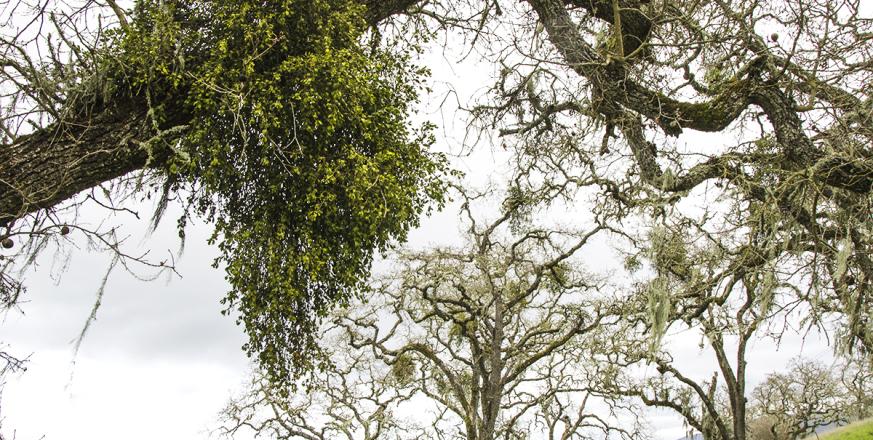Effects of woodland fragmentation detected in airborne mapping of mistletoe

Mistletoe is well known for giving license to holiday kisses but has a vampire-like quality for the trees it grows on. It is a hemisparasite: though it photosynthesizes on its own, it extracts water and nutrients from its host tree. Jasper Ridge has a single mistletoe species, and it can be found on multiple oak species. Until now there was little rhyme or reason to its distribution in the landscape.
In a new publication, Barbosa et al report that airborne spectroscopy can distinguish mistletoe foliage from that of host trees, permitting high-resolution mapping of mistletoe plants and hosts over large areas. They find that host species that are isolated or at the edge of woodland have more mistletoe plants than trees in continuous woodland. This suggests that fragmentation of woodland habitats—through land use change, diminished regeneration, or other factors—is likely to increase the mistletoe load on trees.



